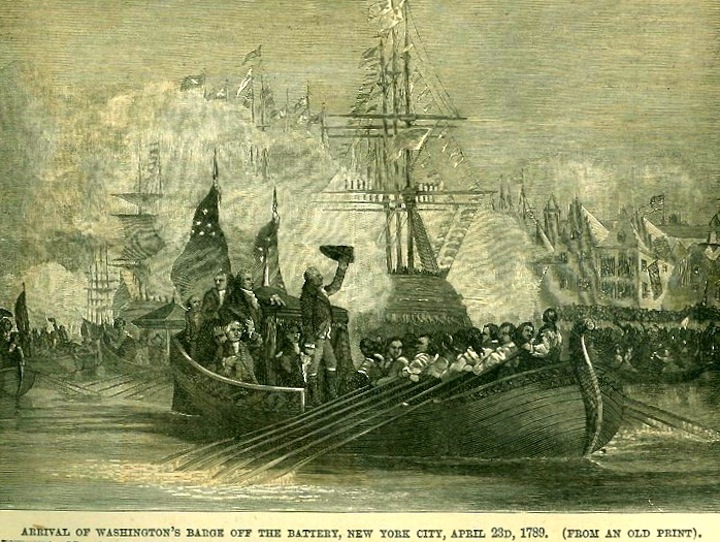George Washington
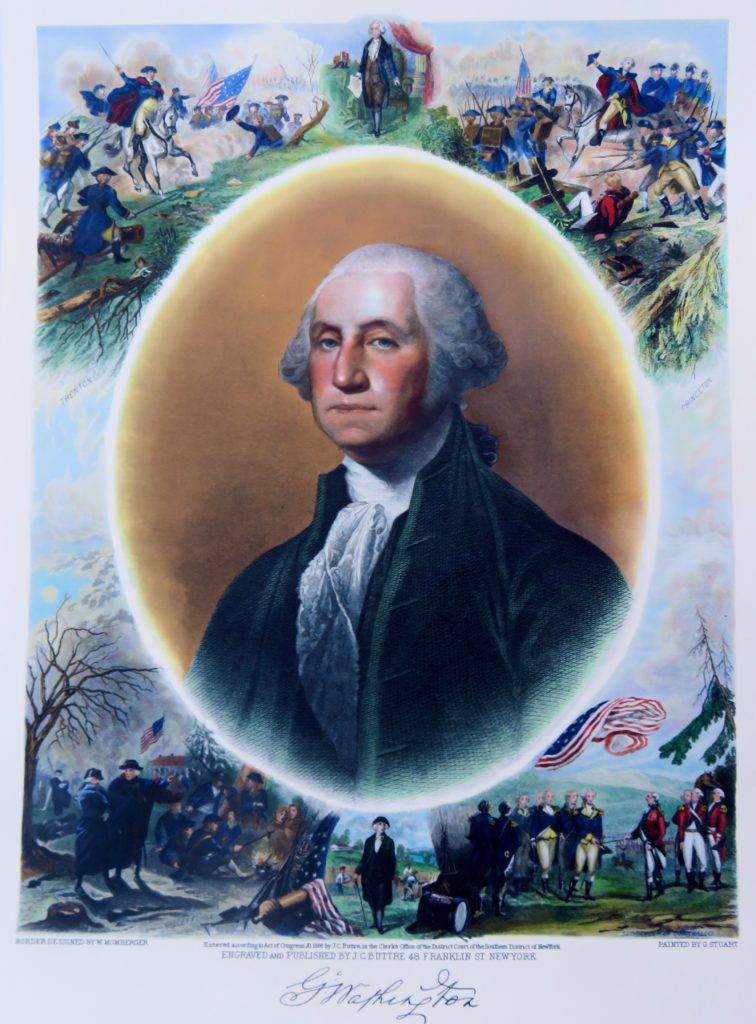
Appointed Commander-in-Chief of the Continental Army on June 15, 1775.
******* ******* *******
George Washington of Virginia was appointed by the Second Continental Congress as the Commander and Chief of the Continental Army. His activities included Command of the main Army, and direction of the overall war effort on behalf of the United States. The administration of the entire Continental Army which was at the time mostly supplemented by colonial state militia was overseen by the Second Continental Congress’s newly formed committee known as, “The Board of War;” which was established in June of 1776. George Washington held the rank of Flag Officer throughout the war. With the War looming in europe between England and France, Washington was subsequently appointed Lieutenant General in 1798, and was posthumously promoted to General of the Armies of the United States in honor of our country’s bi-centenial celebration in 1976.
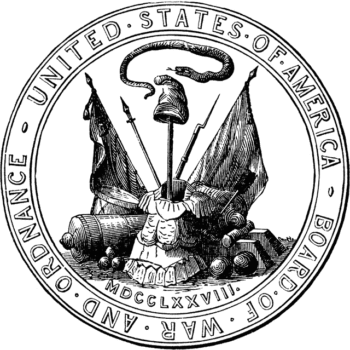
The Second Continental Congress wheels start turning in all facets, much work must be done. Just as George Washington has been burden with the insurmountable responsibility of Battlefield planning and the way towards success, the delegates for committees supply Washington the funding costs necessary for the volunteer patriots who share the vision of Independence and Liberty. All areas must be addressed as Treason weighs against the minds of the Revolutionaries. Calm strategic minds must carefully weigh all facets of the insurmountable tasks ahead.
******* *******
Oliver Ellsworth was a true American statesman, delegate to the Continental Congress, Constitutional Convention, and second Chief Justice of the Supreme Court. This is a wonderful historical association manuscript D.S. with the “Right Date” 1p. 8vo. This is dated in Hartford, June 29, 1776 which is five days before the signing of the Declaration of Independence!
*******
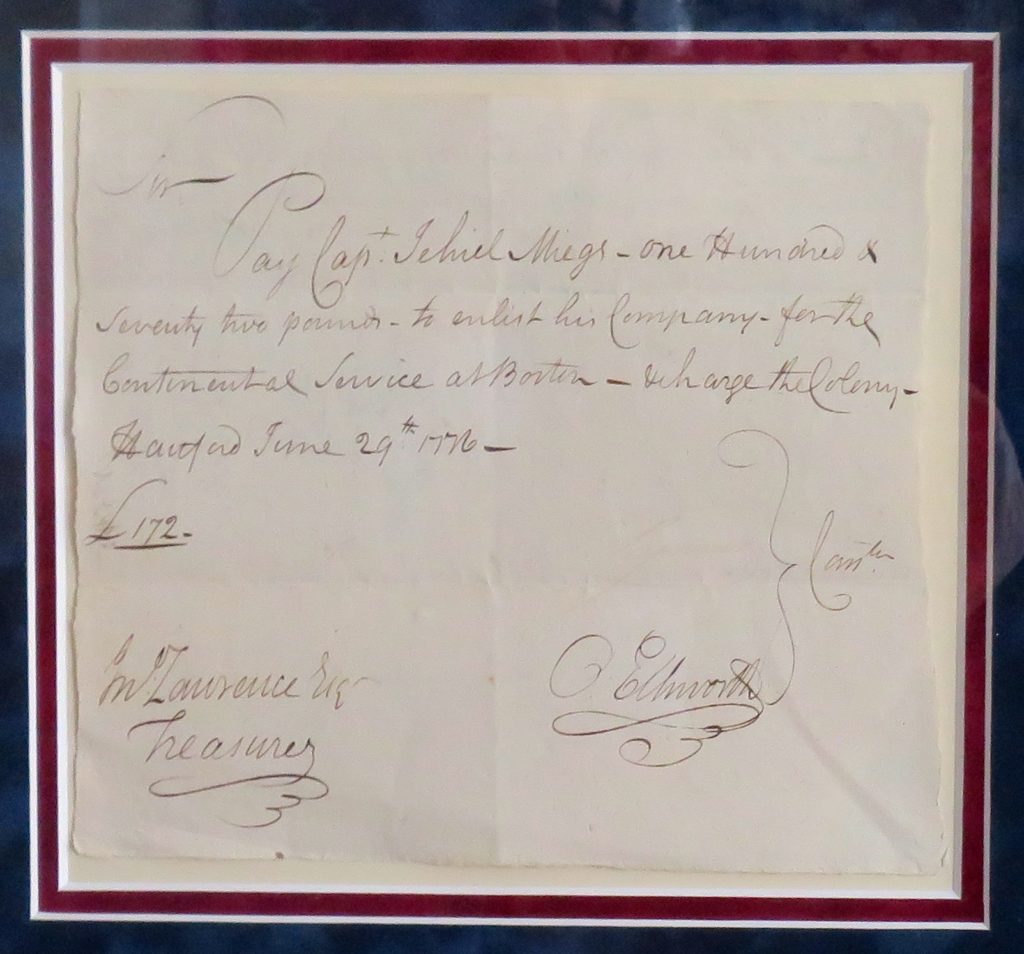
29th of June, 1776
Oliver Ellsworth Orders John Lawrence to Pay Captain Jehiel Meigs L 172 to enlist his Company for the Continental Service in Boston. His company marched in the Lexington Alarm & Fort Ticonderoga.
On a historical note for the historians that honor such men, In April 1775, Captain Meigs served as an ensign in the 1st Conn. Regiment which is the company that marched from Connecticut in the Lexington Alarm, and he later served as Captain at Fort Ticonderoga, New York, and then the Trenton campaign. This guy definitely saw quiet a bit of action, and played an important role in helping the colonial government win independence from Britain.
******* ******* *******
An unusual move, or the incredible foresight by the Revolutionaries of the Second Congress. To me this is the recognition and complete understanding of a Fur Trade up north by N.Y. state border to secure a source of funding as a way and means to supply revenue for the newly forming Continental Army. Ways of funding the patriots cause was desperately in need, aristocratic purses can only be counted on so much. Could this action be the incredible foresight of the Board of War? So, if we put aside the significance of demonstrating the prize of calling for a Continental Army, one can share the vision of the Revolutionaries chessboard piece being carefully placed on the map of success. These are only my thoughts, do with them as you will.
******* *******
In 1777, Ellsworth became Connecticut’s State Attorney for Hartford County. In that same year, he was chosen as one of Connecticut’s representatives in the Continental Congress. He served on various committees until 1783, including the Marine Committee, the Board of Treasury, and the Committee of Appeals. Ellsworth was also active in his state’s efforts during the American Revolution having served as a member of the Committee of the Pay table that supervised Connecticut’s war expenditures. In 1777, he joined the Committee of Appeals which can be described as a forerunner of the Federal Supreme Court. While serving on it, he participated in the Olmstead case that first brought state and federal authority into conflict. In 1779, he assumed greater duties as a member of the Council of Safety, which, with the governor, controlled all military measures for the state. His first judicial service was on the Supreme Court of Errors when it was established in 1784, but he soon shifted to the Connecut Superior Court and spent four years on its bench. History should thank his services, for he was a man of balance and measure. For a little deeper understanding of this great man’s accomplishments, look up each Board and the underlying role it played to establish America’s foundations.
*******
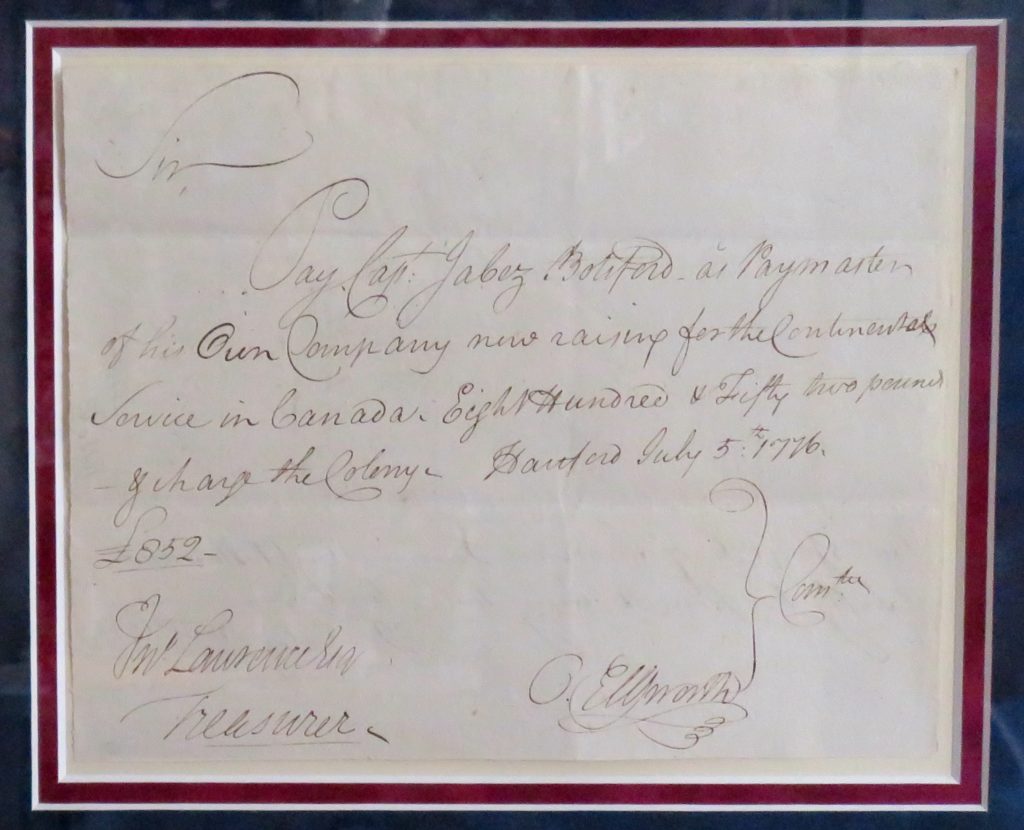
5th of July, 1776
Oliver Ellsworth Orders John Lawrence to Pay Captain John Bodiford L852 to Raise Canadian Army For the Second Continental Congress.
******* ******* *******
The seeds of the American Revolution were in the hearts of the Patriots long before history’s noted events. In actuality, it wasn’t the historical confrontation of the Redcoats on the Greens of Lexington and Concord. Prior revolts against British Empire rule were cropping up all through the colonies. Men were gathering to share their sentiment of oppression throughout the colonies. They would often meet in taverns during historically brutal winters, as the seasons changed in 1775, so did the Patriots resolve. Men of good conscience for Independence and Equality for citizenship would boldly take their Rally-Cry blatantly to the streets. There was a series of consequential actions that were the beginning seeds planted by a few patriots, and then cultivated later by their actions. Either gatherings around a large Elm Tree in a public square for their shared animosity, or there actions of constantly staking Liberty Poles in defiance of British Troop occupation. All these unpublicized actions of history indirectly called upon the Medical profession. At first, as their profession requires a blindness to their patience politics it inadvertently dragged them in often choosing sides during a time the Patriot’s Cause was not supported or desired.
******* *******
As the Patriots rally for war under the leadership of General George Washington, men of clear resolve who have understanding of the true cost of war are asked for their services regardless of their personal politics. One such man was Dr. Robert Usher of Chatham. He was appointed surgeon for Col. James Wadsworth Regt. in the recruits, then raised for Cambridge. Another chess piece placed on the board. Either voluntary or involuntary, their commitment to the Patriots served as a direct violation of their medial oath. Confronted by their own principles, these medical men had no choice as musket balls tore threw both armies of men.
*******
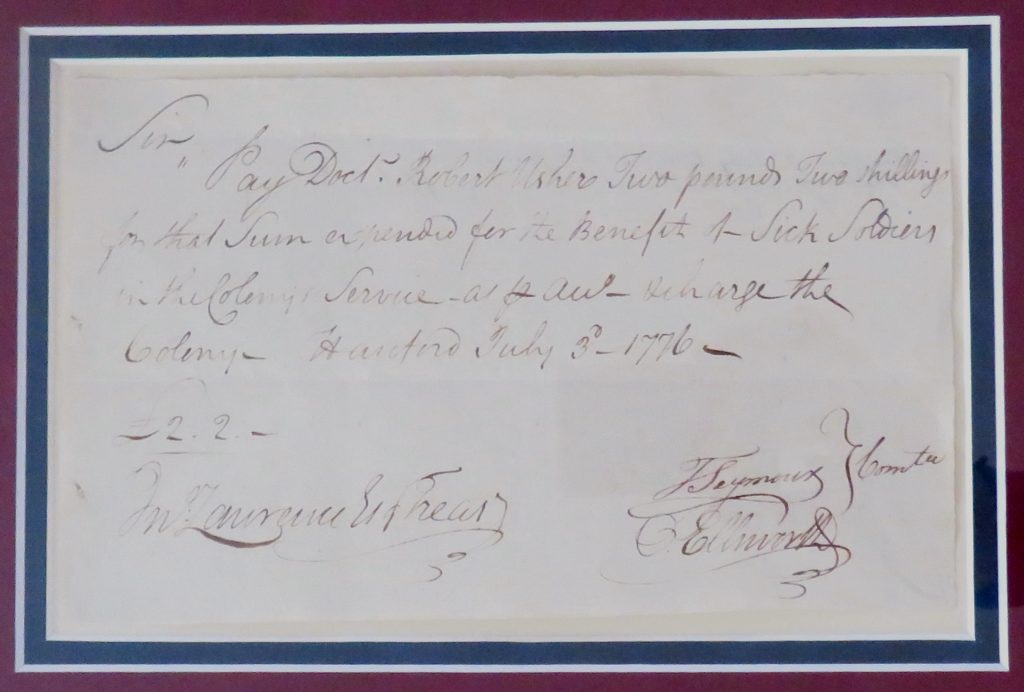
3rd of July, 1776
Oliver Ellsworth orders John Lawrence to pay Dr. Robert Usher L2 & 2 Shillings for serving as a surgeon in the “Colonies Service.”
******* ******* *******
All written and photographed material above was taken from the Robert J. Silverstein Collection of Revolutionary War Artifacts.
******* *******
In writing this page for Isabela’s Library, I felt the need to remember the players who served roles on the Second Continental Congress’s Chess Board. Graciously taken from Wikipedia is a published list of important Revolutionary Patriots who were able to offer their services in hopes of offering their children the opportunities that we take for granted from their actions. God Bless these men, as we as American citizens Bless their Flag, and realize all the opportunities it affords us in present day America.
Robert J. Silverstein
*******
George Washington’s Major Generals
- William Alexander spent most of the war with the Main Army under Washington. He was captured during the Battle of Long Island in 1776 and not long after that, he was exchanged for Montfort Browne. He also served with distinction in numerous battles in New Jersey and Pennsylvania. He died in 1783 shortly before the end of the war.
- Benedict Arnold was a leading force in the early days of the war, participating in the 1775 capture of Fort Ticonderoga and the invasion of Quebec. He played a crucial role in the 1777 Battles of Saratoga, in which he was severely wounded. In 1780 he acquired command of the Highlands Department with the intent of surrendering West Point to the British. The plot was uncovered and he fled to join the British, for whom he served until the end of 1781 as a brigadier general.
- James Clinton was active in his native New York, and was a leading figure of the 1779 Sullivan Expedition to destroy Iroquois settlements in that state. He also served in Quebec and at Yorktown, and commanded American troops at Fort Clinton in their 1777 defeat.
- Louis Lebègue Duportail was French military engineer who served as the Continental Army’s chief engineer. He oversaw the improvement of defences throughout the states, and directed the engineering efforts at Yorktown. He was a brigadier general until November 1781, when he received a brevet promotion to major general.
- Horatio Gates served at first as Washington’s adjutant, and then in the Northern Department. He was in command during the pivotal battle at Saratoga in 1777, following which he lobbied Congress as a potential replacement for Washington. He was afterward given command of the Southern Department, where his army was disastrously defeated at Camden in 1780, ending his field leadership.
- Nathanael Greene was one of the best strategists in the Continental Army. He served under Washington in New York, New Jersey, and Pennsylvania, and served for a time as the army’s Quartermaster General. He led the ultimately successful campaign in 1780 and 1781 against the British “Southern Strategy” as commander of the Southern Department, effectively becoming the Continental Army’s number two general, outranked only by Washington.
- Alexander Hamilton was originally a member of Washington’s staff and served as a Lieutenant Colonel until he resigned his commission after being reprimanded by Washington. Shortly before the Battle of Yorktown, Washington changed his mind and gave Hamilton his commission as a Major General. Hamilton only held the rank for the Battle of Yorktown and resigned shortly afterwards, many people think that he did this for his wife, who was pregnant at the time with their first child and because he wanted to have a larger say in the Congress of the Confederation when it convened in 1782.
- Edward Hand spent much of the war defending Pennsylvania, serving as the commander at Fort Pitt for a time. He was present at Yorktown, and was given a brevet promotion to major general as the war was coming to an end in 1783.
- William Heath was a Massachusetts general with a prominent role training troops in the early days of the war at the Siege of Boston. He spent most of the war leading the Highland Department, since Washington was apparently not confident of his ability in the field.
- Robert Howe was a major general from North Carolina. As commander of the Southern Department, he led a campaign against East Florida that failed due to disagreements with state militia commanders, and was forced to surrender Savannah. He then served under Anthony Wayne in the Highlands Department, seeing action at Stony Point, and under Washington in the Main Army, where he put down a mutiny in 1781.
- Johann de Kalb †, baron de kalb, was a German who served as major general. He served under Washington at Valley Forge, and was sent to the Southern Department with Horatio Gates when he took over that department. De Kalb was killed in the Battle of Camden in August 1780.
- Henry Knox was the chief artillery officer of the Continental Army. Active with Washington throughout most of the war, he brought Ticonderoga’s cannons to Boston in early 1776, and saw the most action from New York to Yorktown. He oversaw the creation of an artillery training centre that was a precursor to the United States Military Academy, and later served as the first United States Secretary of War.
- Marie-Joseph Paul Yves Roch Gilbert du Motier de La Fayette, Marquis de La Fayette was a young French nobleman who served as major general. He served with Washington in the Philadelphia campaign, fought in the Battle of Rhode Island, and successfully resisted significant engagements with British forces in Virginia before the armies of Washington and Rochambeau arrived. He was a favorite of Washington’s, who treated him like a son.
- Charles Lee was an experienced British military officer who had hoped to be appointed commander-in-chief instead of Washington. He was a somewhat difficult subordinate of Washington’s, delaying execution of orders or deliberately flouting them at times. During the retreat across New Jersey from New York, Lee was captured by the British in a surprise raid. Quickly exchanged, he participated in the Philadelphia campaign. After he was convicted by a court martial for disobeying orders during the Battle of Monmouth, he resigned from the army in 1780.
- Benjamin Lincoln was a major general from Massachusetts, who was present at three major surrenders during the war. Active in the New York campaign, Washington sent him to assist Horatio Gates in the Northern Department, where he was wounded after the Battle of Bemis Heights. Next he was put in command of the Southern Department, he was forced to surrender his army to Sir Henry Clinton when they were surrounded in Charleston in 1780. Exchanged later that year, he was present at Yorktown where, as second-in-command to Washington, he accepted Cornwallis’ sword, which Cornwallis had sent his second-in-command to deliver. From 1781 to 1783 he served as Secretary of War.
- Lachlan McIntosh was a Georgia general. Injured in a duel with Button Gwinnett in 1777, he served as head of the Western Department in 1778 and 1779 before returning to the south. He was captured in the 1780 siege of Charleston, and was not released until after hostilities had effectively ended in 1782.
- Alexander McDougall was a major general from New York. Active in the New York and Philadelphia campaigns, he spent most of the war in the Highlands Department under William Heath.
- Richard Montgomery † was a major general from New York. He led the Invasion of Canada in 1775 as a brigadier, and was killed in the Battle of Quebec, without knowing that he had been promoted to major general following the Siege of Fort St. Jean.
- Peter Muhlenberg was a Virginia general who led the 8th Virginia Regiment. First assigned to coastal defenses in the South, he also saw action in the Philadelphia campaign. He was then sent to lead the defence of Virginia, leading mainly militia forces, but then led forward light infantry companies at Yorktown under Lafayette.
- John Paterson was a Massachusetts general active in the most of the early northern campaigns, from Quebec to Philadelphia. He received a brevet promotion to major general in 1783.
- Israel Putnam was the most senior general in the Continental Army, only outranked by Washington. Active from the first days of the revolution, he led the forces in the field at the Battle of Bunker Hill. After performing poorly in the Battle of Long Island, Washington assigned him to do primarily recruiting in the Highlands Department. He suffered a stroke in 1779, which ended his military career.
- Philip Schuyler was a New York major general. As head of the Northern Department, he planned the 1775 invasion of Quebec, but was prevented from leading it by an illness. He was active in the defence of New York in 1777, but the withdrawal from Ticonderoga led Congress to replace him with Horatio Gates. He was also active in Indian relations, cultivating the neutrality or support of tribes in New York.
- William Smallwood led forces from Maryland in the war. He served with distinction in the New York campaign, and was twice wounded at White Plains. He then served in the Philadelphia campaign, and was in the debacle at Camden in 1780.
- Arthur St. Clair was a large landholder in western Pennsylvania when the war began. He led troops during the Quebec, New York, and New Jersey campaigns, and was then put in command of Fort Ticonderoga, where he made the critical decision to retreat before Burgoyne’s advancing army. Publicly criticized for this step, which saved his army, he held no more field commands, but served as an aide to Washington for the rest of the war.
- Adam Stephen was general from Virginia, who led forces under Washington in the New York, New Jersey, and Philadelphia campaigns. Following a misstep in the Battle of Germantown in which, against orders, he advanced his troops to a point where they accidentally exchanged friendly fire with forces of Anthony Wayne, Stephen was court martialed and cashiered out of the army.
- Friedrich Wilhelm von Steuben was a Prussian aristocrat and military officer. His military drills and instruction, especially at Valley Forge, are generally credited with significantly improving the performance of the Continental Army. He served in active roles in the Philadelphia campaign, and under Nathanael Greene in his southern campaign, before returning to Washington’s army at Yorktown. He authored Regulations for the Order and Discipline of the Troops of the United States, the United States Army’s training guide until the War of 1812.
- John Sullivan was from New Hampshire. Active from the first days of the war, he led a relief column and ended up in command of the invasion of Quebec during its final weeks in 1776. He then served under Washington in New York, New Jersey, and Pennsylvania. He led American forces in the failed Battle of Rhode Island, and then led the 1779 Sullivan Expedition, which destroyed Indian villages in New York.
- John Thomas was a Massachusetts general active from the beginning of the war in Boston where he commanded the besieging forces at Roxbury. Sent to take over the forces besieging Quebec City, he died of smallpox during the army’s retreat in June 1776.
- Artemas Ward was the first overall leader of the assembled militia forces outside Boston after the war began, and ranked second in seniority to Washington in the Continental Army. He commanded the Eastern Department, which was largely responsible for containing the British at Newport, until 1777, when he resigned due to poor health.
- “Mad” Anthony Wayne was a Pennsylvania general. Active in the Quebec invasion, he was stationed at Fort Ticonderoga during the winter of 1776-1777. He then participated in the Philadelphia campaign, playing a key role in the Battle of Monmouth. He held a variety of commands thereafter, and negotiated peace agreements with Indians along the southern frontiers. He was promoted to major general in 1783. He was given the nickname “Mad” Anthony because of his military achievements and his exuberant personality.
- David Wooster † participated in the Quebec invasion, serving as military governor of Montreal. He led the Canadian Department after the death of Richard Montgomery. Following the retreat from Quebec, he returned to his native Connecticut, where he led the state militia. He was killed in the 1777 Battle of Ridgefield.
Brigadier Generals under General George Washington
- Daniel Brodhead
- George Clinton
- Elias Dayton
- John Glover
- Mordecai Gist
- Josiah Harmar
- Moses Hazen
- James Hogun (POW)
- Isaac Huger
- William Irvine
- Jean Baptiste Joseph, chevalier de Laumoy
- Tadeusz Kościuszko
- Andrew Lewis
- William Maxwell
- Hugh Mercer †
- Samuel Miles
- James Moore
- Daniel Morgan (POW)
- Francis Nash †
- Enoch Poor
- Kazimierz Pułaski (Casimir Pulaski) †
- Rufus Putnam
- Gold Selleck Silliman
- William Thompson
- Charles Armand Tuffin, marquis de la Rouerie
- Charles Scott (POW) (brevet to Major General 1791)
- John Stark (not promoted to major general until 1786)
- Jethro Sumner
- George Weedon
- William Whipple
- James Wilkinson (brevet to brigadier in 1777, promoted to major general in 1812)
- William Woodford (died as POW)
- Samuel McClellan
State Militia
- Delaware
- Caesar Rodney, signed the Declaration of Independence, and led the Delaware state militia until 1781, when he resigned due to poor health. He was active in suppressing Loyalist dissent, and raising men and provisions for the national effort.
- Thomas Collins led the Delaware militia following Rodney’s resignation, and served as president of the state after the war.
- Massachusetts
- Joseph Palmer
- Joseph Warren an American physician who played a leading role in American Patriot organizations in Boston in the early days of the American Revolution, eventually serving as President of the revolutionary Massachusetts Provincial Congress. Warren enlisted Paul Revere and William Dawes on April 18, 1775, to leave Boston and spread the alarm that the British garrison in Boston was setting out to raid the town of Concord and arrest rebel leaders John Hancock and Samuel Adams. Warren participated in the next day’s Battles of Lexington and Concord. Warren had been commissioned a Major General in the colony’s militia shortly before the June 17, 1775 Battle of Bunker Hill. Rather than exercising his rank, Warren served in the battle as a private soldier, and was killed in combat when British troops stormed the redoubt atop Breed’s Hill.
- New Jersey
- New York
- North Carolina
- Rhode Island
- South Carolina
- Thomas Sumter, “The Gamecock,” was the senior brigadier general appointed in South Carolina, but operated independently of the others. As a result, Sumter rarely commanded more than his own brigade of state troops and militia.
- Vermont
- John Adams Famous Bostonian and Son of Liberty member, wrote the Navy’s Code of Discipline. Additionally, through the Continental Congress commissioned the first war ships for defending the Colonies and seizing British resources from reaching enemy troops.[4]
- Esek Hopkins was an established Sea Captain and Brigadier General of Militia from Rhode Island who was named Commodore and Commander in Chief of the Continental Navy in 1776. He disregarded his instructions from Congress to take the fleet to cruise the Southern colonies, instead attacking British colonial holdings in the Caribbean in the Battle of Nassau. This act was Initially hailed as heoric, he was subsequently censured by Congress in August 1776, and was relieved of his command in January 1778.
- James Nicholson of Virginia was the designated Senior Captain in the Navy for political reasons in October 1776. He was the senior officer in the navy after Commodore Hopkins’s relief in 1778, but never exercised command over the whole navy because it had ceased to operate as an organised fleet.
- Abraham Whipple was a Commodore in the Continental Navy. In one of the first military actions of the revolution in 1772, Whipple led 50 Rhode Islanders in the capture and burning of the British revenue cutter Gaspee.
******* ******* *******
Lastly, I would like to take a minute and thank-you for visiting Isabela’s website Library during your valuable free time. I am humbled that you chose to grace our pages, and read our special insights. My goal as a button collector is to bring America’s rich history behind the button’s meanings to bring it to life. We try to offer obscure or little known facts out in the public’s sight for a renewed appreciation of the events and accomplishments of these men. Only by showing the era’s context can we promote Patriotism to our younger generation. So, I am humbled every time I see the stats of visitors continually rise for public consideration of our written material. God Bless you, and your families, for you are America’s children living in the successful experiment of self-governance created by the contributions of the men above.
– R.J. Silverstein
